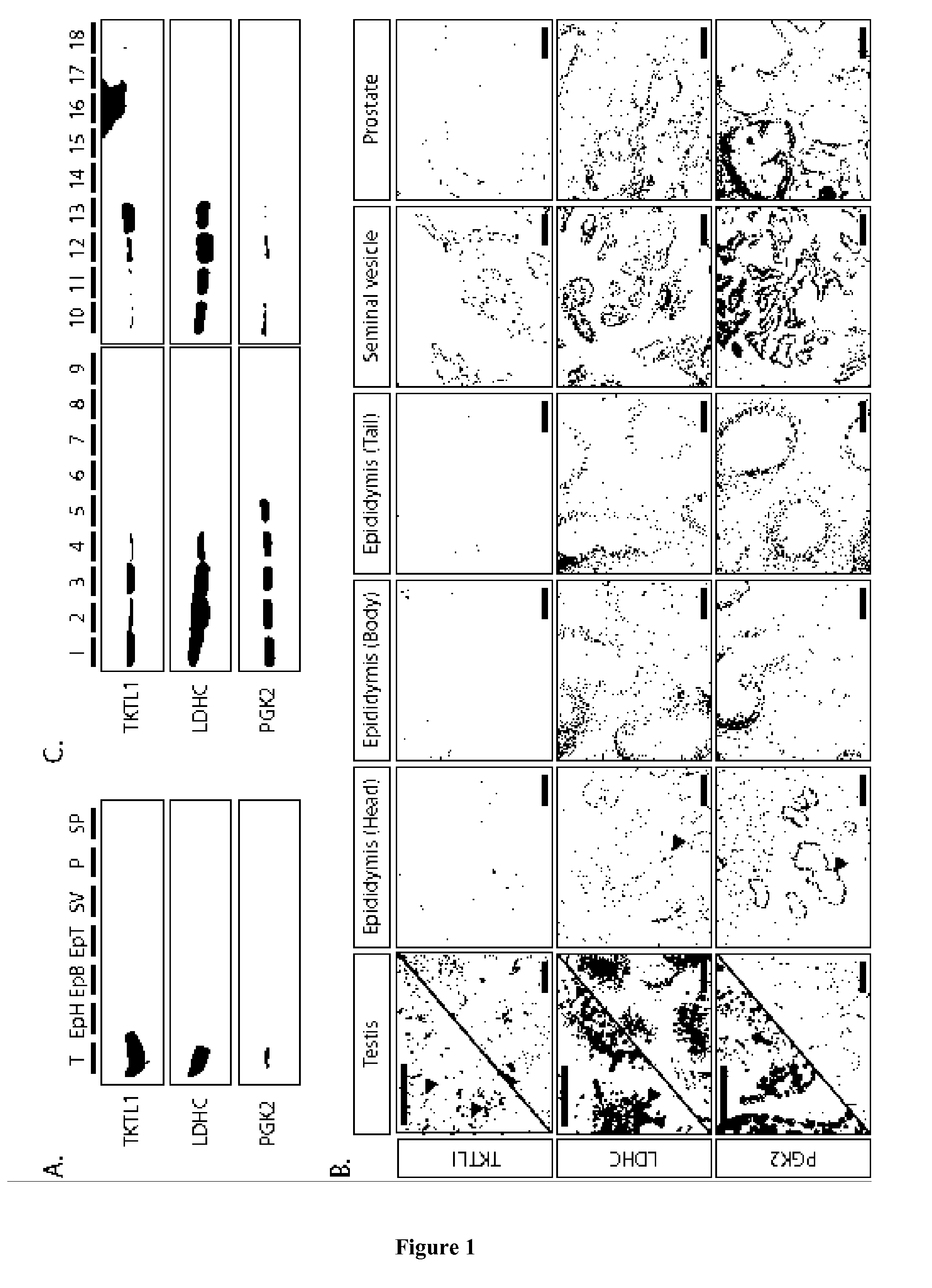Method for predicting the presence of reproductive cells in testis
a testicular cell and testicular germ technology, applied in the field of testicular germline markers, can solve the problems of defective sperm production or sperm motility, common problem of infertility, and defective spermiogenesis
- Summary
- Abstract
- Description
- Claims
- Application Information
AI Technical Summary
Benefits of technology
Problems solved by technology
Method used
Image
Examples
example 1
Materials and Methods
[0044]The solid-phase combinatorial peptide Library-1 (ProteoMiner™) and carboxylated version (Library-2) were both from Bio-Rad Laboratories (Hercules, Calif., USA) as well as materials for electrophoresis such as plates and reagents. Sequencing grade trypsin was from Promega (Madison, Wis., USA). All other chemicals were from Sigma-Aldrich (Saint Quentin Fallavier, France).
[0045]Methods:
[0046]Human Seminal Plasma Collection
[0047]Proteomic analysis was conducted on pooled ejaculates from a single healthy donor which were processed as described elsewhere (13). Briefly, fresh ejaculates were recovered on ice and immediately centrifuged at 14000 g for 5 minutes at 4° C. The supernatants were supplemented with protease inhibitors (Complete™ Protease Inhibitor Cocktail; Roche Applied Science) prior to ultracentrifugation at 105000 g for 45 minutes at 4° C. For each ejaculate, the clear supernatant resulting from ultracentrifugation was stored at −80° C. until use. P...
example 2
[0097]The inventors have conducted studies to validate the relevance of the method according to the invention for predicting the presence of reproductive cells in the testis.
[0098]The inventors assessed the presence of two additional potential germline markers in the seminal plasma using sperm samples from fertile donors and from subjects exhibiting anomalies / pathologies. OTUB1 and SPACA3 were consistently detected in normal seminal plasmas, but were undetectable or barely detectable in seminal plasmas from subjects with NOA, OA and post-vasectomized men.
PUM
| Property | Measurement | Unit |
|---|---|---|
| temperature | aaaaa | aaaaa |
| pH | aaaaa | aaaaa |
| concentration | aaaaa | aaaaa |
Abstract
Description
Claims
Application Information
 Login to View More
Login to View More - R&D
- Intellectual Property
- Life Sciences
- Materials
- Tech Scout
- Unparalleled Data Quality
- Higher Quality Content
- 60% Fewer Hallucinations
Browse by: Latest US Patents, China's latest patents, Technical Efficacy Thesaurus, Application Domain, Technology Topic, Popular Technical Reports.
© 2025 PatSnap. All rights reserved.Legal|Privacy policy|Modern Slavery Act Transparency Statement|Sitemap|About US| Contact US: help@patsnap.com

